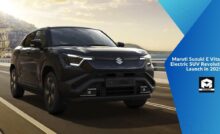Top 10 FAQs About FASTag [All You Need to Know]


Top 10 FAQs About FASTag [All You Need to Know]
Update (November 30, 2019): As per the latest buzz, to give some relief to the citizens, the Indian government has extended the deadline for the FASTag from December 1 to December 15, 2019.
Original Article (November 29, 2019): National Electronic Toll Collection Programme, which is also called the FASTag programme, is an initiative by MoRT&H and National Highways Authority of India. The initiative has been taken in order to ensure seamless movement of traffic and collection of user fee as per the notified rates, using passive Radio Frequency Identification (RFID) technology.
In an announcement made by the Road and Transport Minister Mr Nitin Gadkari, it has been notified that FASTags will become mandatory for all vehicles, private and commercial, starting from December 1, 2019. According to a source, the vehicles without FASTags will have to pay twice the normal rate at toll gates across the country. Here are top 10 frequently asked questions about FASTag.
Top 10 FAQs About FASTag
1. What is FASTag?
FASTag is a passive device (sticker) with a unique identification number that uses RFID technology that helps you make payments directly while the vehicle is in motion. In simple terms, it is quite similar to Near Field Communication (NFC) technology.
2. How FASTag Works?
The FASTag is affixed on the windscreen of the vehicle that helps the customer make the payment directly from the account that has been linked to the FASTag. It is also interesting to note that a FASTag does not have an expiry date and can be used as long as they can be read at the toll plaza and aren’t tempered.
3. From Where Can I Buy a FASTag?
The FASTags are being issued by 22 certified banks which can be bought via various channels like Point-of-Sale (POS) at the toll plazas of National Highway and also at select bank branches. They can also be bought at e-commerce platforms such as Amazon. As per the latest buzz, PayTM has also started selling FASTags through its website and smartphone app.
4. How to Activate a FASTag?
FASTags are ‘bank neutral’ in nature as no bank has been pre-assigned to it at the time you purchase it from a POS terminal or any other online portal. As far as the online FASTags are concerned, they are based upon DIY concept where it can be activated just by entering the vehicle details in the ‘My FASTag’ mobile app which can be downloaded from Google Play Store and Apple Store.
After that, you have the freedom to link any one of your existing bank accounts. Apart from that, the app also has an NHAI wallet facility from where the money of the toll will be deducted from the wallet instead of getting deducted directly from the bank account.
Another method for activation is by visiting the certified bank branch where the FASTag can be linked with the existing bank account. There you need to submit the KYC as per the KYC policy and along with that you need also submit the Registration Certificate (RC) and application for FASTag to the bank.
5. What are the Charges for a FASTag?
A FASTag that has been issued by the certified banks can charge a maximum of Rs 100 for each, which has been fixed by National Payments Corporation of India. On the contrary, the actual tag issuing fee is defined by the bank and it may vary.
The CEO of 1-Pay which is a Mumbai-based digital payment solutions firm, Abhijeet Sehgal said in an interview that the charges may vary if you buy the tag online as the person who is the seller has also added the cost of delivery. About which he said, “Amazon’s 20% commission is also added to the cost hence it is more expensive than the normal rate when you buy online”.
6. What Type of FASTag Should I Get for My Vehicle?
In accordance with the category of the vehicle that you own, a colour code is provided to your FASTag which helps in collecting a minimum amount. A charge of INR 100 is taken for the card, INR 200 is taken as a refundable deposit whereas the remaining amount is retained as a balance. The INR 100 fee has been exempted till November 30 by the Union government. Here are the colour codes for different types of vehicles:
Types of Vehicle – Colour Code – Amount
- Car/Jeep/Van – Violet – INR 500
- TATA Ace/Mini LCV – Violet – INR 500
- LCV 2 Axle – Orange – INR 600
- Bus/Truck 3 Axle – Yellow – INR 700
- Bus/Truck 2 Axle – Green – INR 600
- Truck 4 Axle and Above – Pink – INR 800
- Oversized – Light Blue – INR 900
- Earth Movers – Grey – INR 800
7. Where Can the FASTags be Used?
The usage of the FASTag has been optional since it was first introduced four years earlier, until now. The FASTags can be used at over 500+ toll plazas present throughout the country.
However, its usage has been mandated by the Indian government starting from December 1, 2019, for all the four-wheelers, which mean that all lanes at national highway toll plazas will only allow electronic toll collection through FASTag whereas just one lane will be reserved for collection through cash. Mr Gadkari also notified that almost 90% of toll plazas are ready for FASTag infrastructure.
8. What are the Benefits of a FASTag?
It will help resolve a number of issues which include complete halt at the turnpike for cash transactions which won’t be required now as the commuters can save time rather than wasting time in long queues. The expedition on toll saves fuel hence causing less pollution. In addition to that, the entire infrastructure will promote digitalisation, reduce cash handling and will also increase transparency.
9. How to Recharge your FASTag?
The FASTag can be linked with a prepaid account or to the customer’s savings/current account for the recharge purpose. In the former account type, the customer can top-up according to his requirement which can be done through the FASTag app or the recharge can also be done from the issuer bank’s website using debit cards, credit cards, and online banking.
Some keynotes revealed that with two or more vehicles, you will have to buy two separate FASTags for the two vehicles and so on. About which the IHMCL said – “If you reside within a range of 10km from the toll plaza, you can avail a concession on toll to be paid via your FASTag. In such a case, you need to submit the required documents – proof of residence at the bank, nearest POS location to validate that your residential address is within 10 km of a particular toll plaza. Once the address is verified, you can avail a concession on the toll paid via FASTag assigned to your vehicle.”
10. To Whom Should I Contact in Case of any Issues?
In case you have any queries regarding your FASTag, then the following list of toll-free numbers will come in handy for you.
- Axis Bank – 1800-419-8585
- ICICI Bank – 1800-2100-104
- IDFC Bank – 1800-266-9970
- State Bank of India – 1800-11-0018
- HDFC Bank – 1800-120-1243
- Karur Vysya Bank – 1800-102-1916
- EQUITAS Small Finance Bank – 1800-419-1996
- PayTM Payments Bank Ltd – 1800-102-6480
- Kotak Mahindra Bank – 1800-419-6606
- Syndicate Bank – 1800-425-0585
- Federal Bank – 1800-266-9520
- South Indian Bank – 1800-425-1809
- Punjab National Bank – 080-67295310
- Punjab & Maharashtra Co-op Bank – 1800-223-993
- Saraswat Bank – 1800-266-9545
- Fino Payments Bank – 1860-266-3466
- City Union Bank – 1800-2587-200
- Bank of Baroda – 1800-1034-568
- IndusInd Bank – 1860-500-5004
- Yes Bank – 1800-1200
- Union Bank – 1800-222-244
- Nagpur Nagarik Sahakari Bank Ltd – 1800-2667-183
Recent Posts
Mostbet Application Down Load Apk For Android In Add-on To Ios 2024
Note A Person could likewise get older versions of this particular software on base regarding…
Exactly How To Betway How To Be Able To Register, Down Payment In Addition To Location Sporting Activities Bets
Or probably you’re fascinated within a variety regarding impressive gameshows just like Funds or Collision,…
Ayhkd Zero Downpayment Added Bonus Codes 2025 #1
Following a totally free added bonus, players must help to make a downpayment before proclaiming…
Pin Up App Estatal Afin De Android E Ios Sólo A Few,Zero Mb
Notice o qual o libro só pode se tornar baixado através do site, pois a…
Najkorzystniejsze Kasyno Przez Internet Gwoli Polaków!
Minimalna suma wypłaty wydaje się najczęściej ustalona na około stu ZŁ, jak wydaje się najmniejszą…
Celebration Online Casino Bonus Code For 200% Upward To $200 Welcome Bonus
The on range casino furthermore contains a ‘security message’ system of which assists reduce any…

